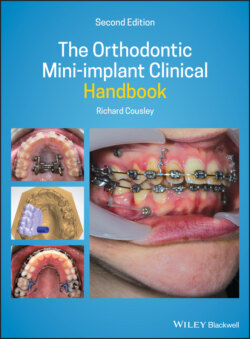Читать книгу The Orthodontic Mini-implant Clinical Handbook - Richard Cousley - Страница 23
1.10 Root/Periodontal Damage
ОглавлениеMultiple clinical and animal studies have been conducted with the aim of intentionally inflicting damage on tooth roots, using both pilot drills and self‐drilling mini‐implants [34–42]. Fortunately, these studies have consistently shown that traumatised root surfaces are repaired within 12 weeks by cellular cementum and periodontal regeneration, provided that there is no infection portal present (which is usually the case). The cementum repair even occurred when root dentine was fully exposed [34]. Orthodontists can also be reassured that there are no known reports of tooth ankylosis or loss arising from mini‐implant use. This may be because, in normal clinical usage, if a self‐drilling mini‐implant contacts a root then the insertion stalls and its tip will become blunt, preventing extensive penetration of the root tissues. Furthermore, the patient is likely to complain of pain (from periodontal pain receptors) even before root contact occurs. If the root is actually contacted then the orthodontist is also likely to feel a sharp increase in insertion torque [43].
So if a mini‐implant doesn't actually contact a root surface, is there still scope for indirect damage? A recent finite element analysis study indicated that less than 1 mm of separation of the mini‐implant and the adjacent root surface may still risk root resorption because a transfer of stress through the thin layer of bone causes an osteoclastic reaction beside the root surface [44]. However, this has not been validated by animal or clinical studies, and the reciprocal effect on bone remodelling around the mini‐implant is more likely to have a negative impact. For example, a histological analysis of mini‐implants inserted in a dog model showed a significant reduction in BIC where the implant body contacted the root or even just the bundle bone (around the periodontal ligament) [45]. Therefore, it is reasonable to conclude that any irreversible effect from close proximity of a mini‐implant and a tooth root will be on the mini‐implant: it will have an increased risk of failure (by becoming mobile) rather than the tooth being irreversibly damaged [43,46–50].
Any irreversible effect from mini‐implant–tooth proximity is on the mini‐implant: it fails (by becoming mobile), not the tooth.
